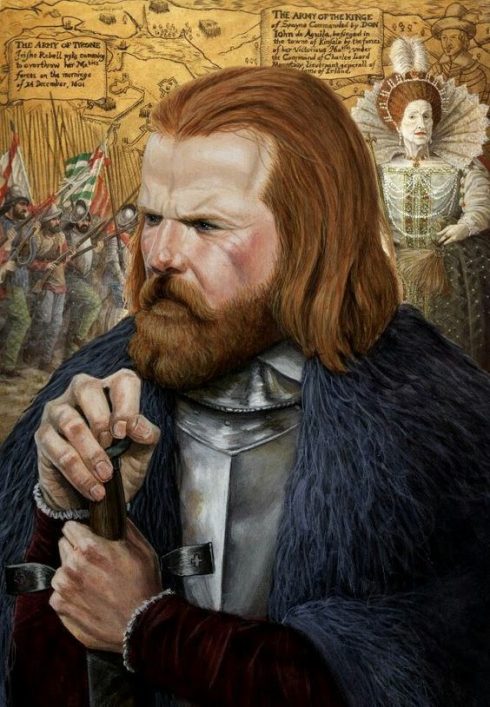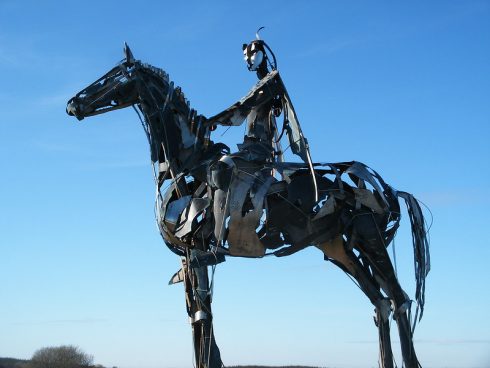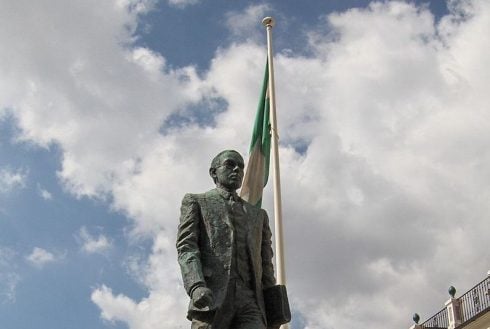IT may seem curious, but a tribute to legendary Irish Chieftain Red Hugh O’Donnell has just been paid in the Spanish city of Valladolid to mark the 420th anniversary of his death.
Guests from Ireland and the US attended the unveiling of a plaque to the Gaelic hero as well as a weekend of events to commemorate O’Donnell’s death from September 10 to 12.
The Spanish city is known to be the final resting place of Red Hugh, who had fled Ireland with other Irish lords in the famous Flight of the Earls after they and their Spanish allies had been beaten by the English at the battle of Kinsale.
They had arrived in La Coruña and were received with great honours by the Governor of Galicia and the Archbishop of Santiago, where an Irish College was founded.

There they plotted their return to Ireland to continue the Nine Years War against the Tudor monarchs who were taking over Ireland.
For this they needed the help of Spain, so Red Hugh travelled to Valladolid to meet Philip III, who promised to organise a new invasion.
After waiting for a year without hearing more, he decided to return to the city, but died on the journey, and was temporarily buried in Simancas Castle in 1602.
Although for many years it was believed that he had been poisoned by Irishman James Blake on the orders of the English, it is now widely accepted that his death was due to a parasite infection.

The story of ‘Red Hugh’ has huge importance for Spain and Valladolid, where he was believed to have been re-buried in the chapel grounds of a Franciscan convent. But when the monastery was leveled in 1836, the bones of Red Hugh were not there. Now, archeologists are searching for the skeleton of the eight-toed Irish rebel beneath a branch of Banco Santander in the city centre – and have been for two years. So far several skeletons have been unearthed – but DNA tests from his descendants have so far failed to find a match.

The red-headed rebel was born into the powerful O’Donnell dynasty in County Donegal and fought valiantly for control of his nation against Queen Elizabeth I.
At just 15 years old, Red Hugh was kidnapped by the English army and imprisoned in Dublin Castle. His abduction served as a warning to the O’Donnell clan: if you rebel against the English monarchy you will face the consequences.
But after five years of captivity, he escaped with help from a loyal friend of his father. The journey home during a bleak Irish winter nearly cost the renegade his life. Red Hugh recovered from severe fatigue, but lost his two big toes to frostbite.
The chieftain was quick to begin invasions to reclaim Irish land that had been commandeered by the English in his absence. As a fellow Catholic territory fighting to rid itself of protestants, Spain’s King Phillip III supported the effort and sent boats of warriors to Kinsale.

When Spanish ships docked at County Cork, English troops surrounded the armada and killed hundreds of men in a bloody battle, with the surviving Irish chieftains fleeing to Spain.
After his death, the 29-year-old warrior’s body was exhumed and taken to the royal palace in Valladolid with pomp and ceremony. A four-wheeled hearse drove the corpse to its resting place, surrounded by guards, state officers and flaming torches to signify admiration.
As a mark of respect, the king honored Red Hugh with a special burial in the Chapel of Wonders – a Franciscan convent where explorer Christopher Columbus would be buried a century later.
His death marked the end of the Spanish plan to invade Ireland. Although the plan may have been forgotten, Red Hugh never was, neither in Ireland nor in Spain.
READ MORE:
- What do King Solomon, Andalucia’s Rio Tinto mines, NASA and Mars have in common?
- Secrets from the deep: As reservoirs dry up across Spain, long lost ancient sites are revealed
- One of Europe’s biggest megalithic sites discovered in southern Spain while planting avocados
Click here to read more La Cultura News from The Olive Press.








